41 of Australia’s most stunning natural wonders
The best of Australia
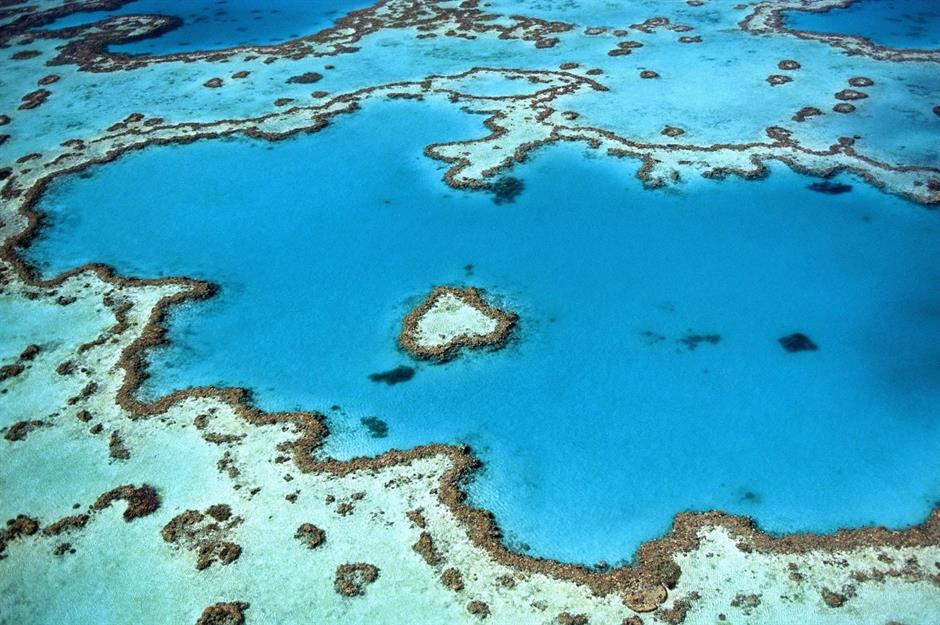
From coral reefs and deserts to surreal rock formations and wild coastlines, Australia’s natural beauty is as diverse as it is dramatic. We’ve ranked 41 of the country’s most stunning natural wonders – each one a powerful reminder of this ancient land’s unique spirit and landscapes.
Click through this gallery to discover our ranking of Australia's most stunning natural sights...
41. Kakadu National Park, Northern Territory
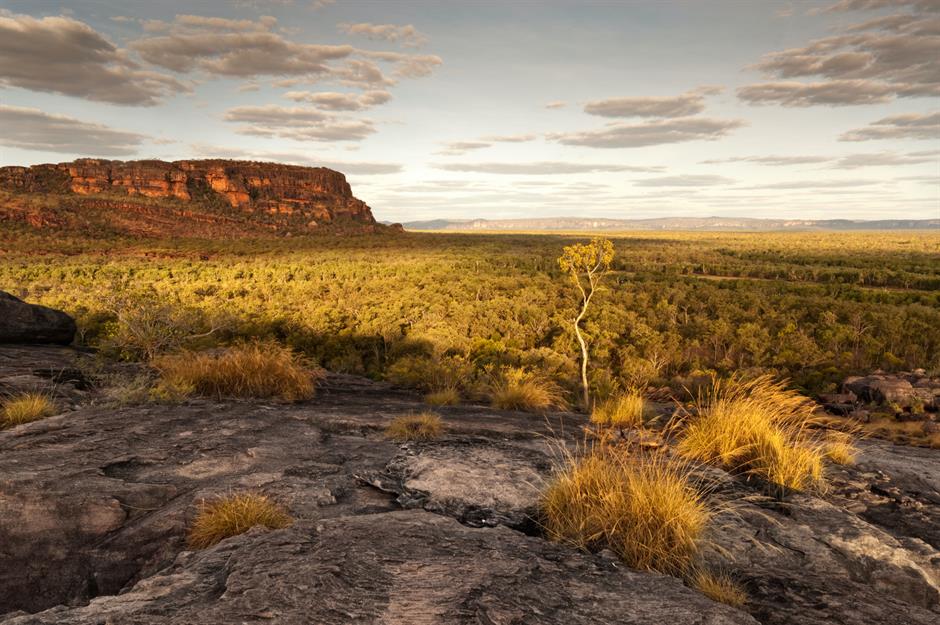
Australia’s largest national park is so full of wonders that it demands days to do it justice. One of the highlights has to be a dawn cruise around the Yellow Water Billabong to watch the park's birds come to life and spot crocs lurking beneath.
As well as its extraordinary wetlands, the park has lush rainforests, rocky gorges, waterfalls, swimming holes and the oldest Indigenous rock art in the world. You’ll find it at Burrunggui (Nourlangie Rock), pictured, as well as sweeping views of the ancient landscape.
40. Arnhem Land, Northern Territory
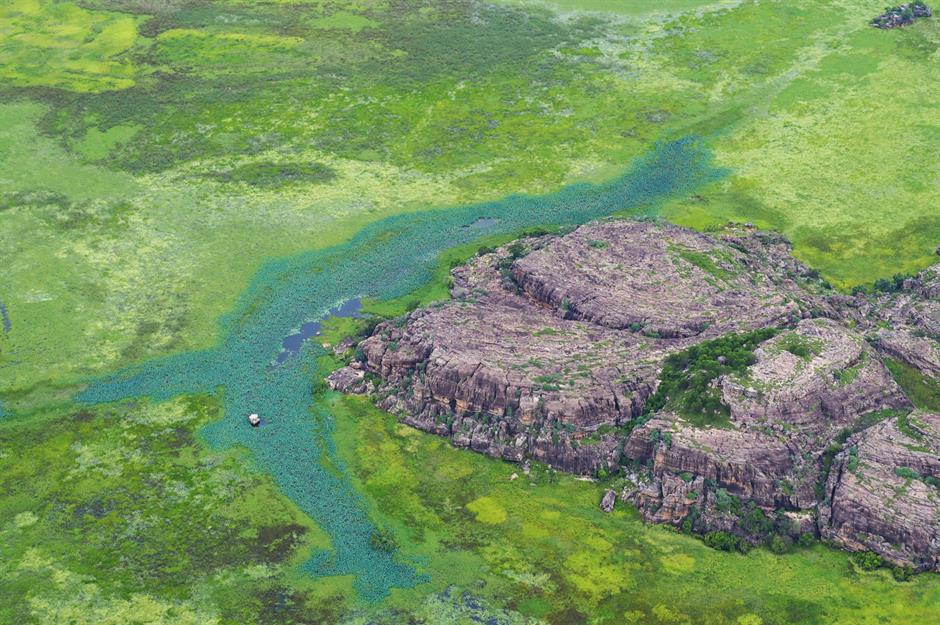
The traditional home of the Indigenous Yolngu people, Arnhem Land is a majestic landscape of rugged ranges, billabongs, floodplains, paperbark swamps and monsoonal rainforests.
This immense swathe of wilderness in the northeastern corner of the Northern Territory is stuffed with sacred sites, as well as some of the country’s most significant pieces of rock art.
39. Phillip Island, Victoria
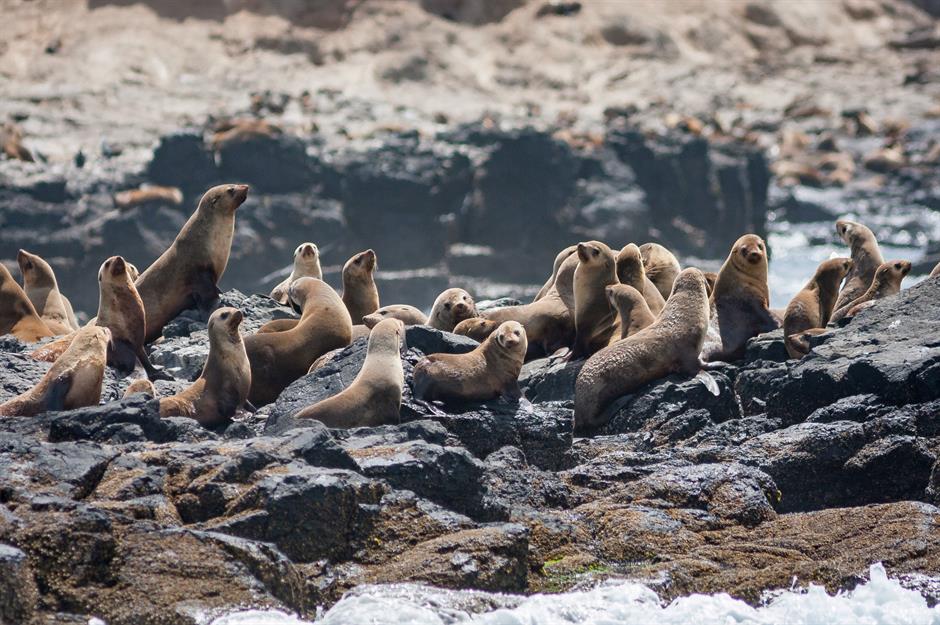
A short hop from culture-packed Melbourne lie the wild beaches, rocky bays and spectacular headlands of Phillip Island. Home to a colony of Australia’s native little penguins, it's unsurprisingly a popular spot for wildlife spotting.
A staggering 32,000 of the little birds live in the waters around Phillip Island, many of which have their burrows around Summerland Beach. It also has one of the country’s largest colonies of fur seals: head to Seal Rocks at the far southwestern tip to see some of them.
38. Cradle Mountain-Lake St Clair National Park, Tasmania

Follow the Dove Lake Circuit trailhead to get the best views of Tasmania’s iconic Cradle Mountain as it rises over mirror-like Dove Lake. Australia’s deepest freshwater lake, the piercing-blue Lake St Clair, is also here, as well as ancient temperate rainforest and an extraordinary range of native animals.
Keep watch for kangaroos, wallabies, Tasmanian devils and the famously elusive platypus as you roam about this spectacular national park, which is part of the state’s vast Wilderness World Heritage Area.
Follow us on Facebook for more travel news, features and inspiration
37. Great Ocean Road, Victoria
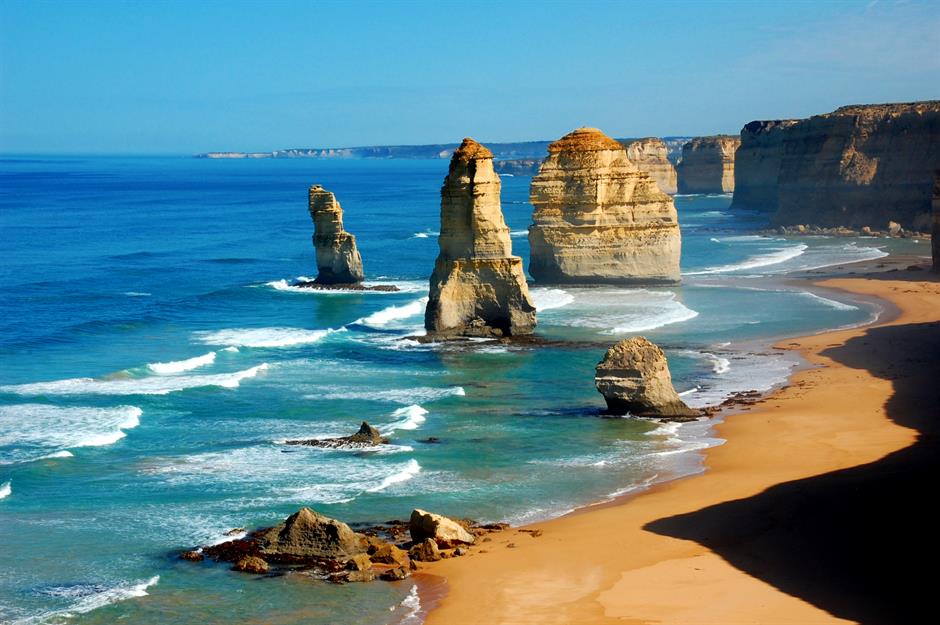
Stretching 249 miles (400km) from Torquay to Nelson on the South Australia border, the Great Ocean Road is one of the world’s most spectacular coastal drives. Hugging the dramatic Victorian coastline, you’ll pass forests, rocky seashore platforms, wild surf beaches and towering cliffs with soaring views of the Southern Ocean-lashed coast.
Famous rock formations include the Twelve Apostles and what remains of London Arch. You’ll also spy wildlife along the way: kookaburra, kangaroos and koalas are all common sights.
36. Tasman Peninsula's Dolerite Cliffs, Tasmania
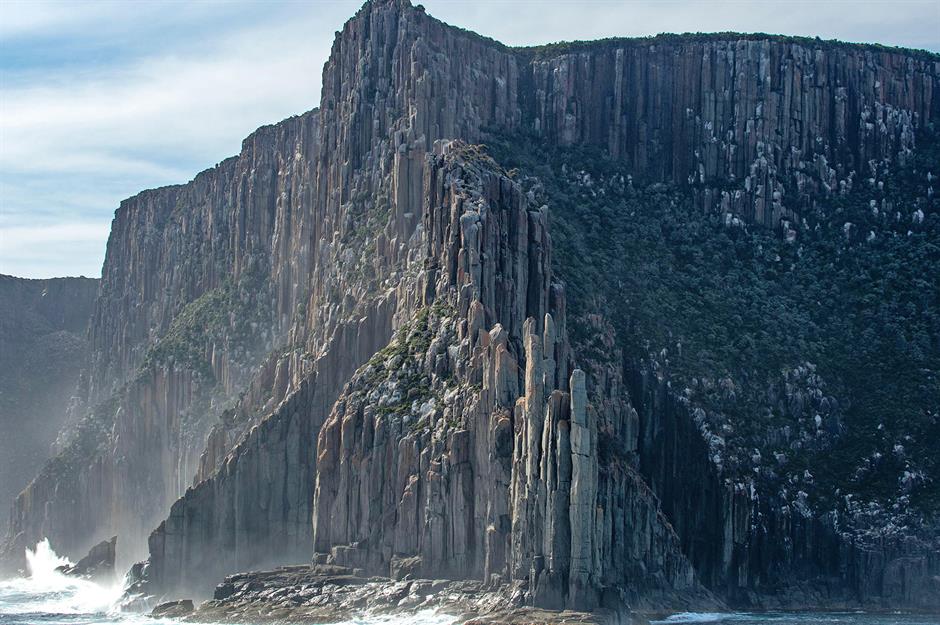
Nowhere in Australia are the country’s volcanic origins more dramatically displayed than along the dolerite cliffs of the Tasman Peninsula. Towering more than 985 feet (300m) above the sea, these soaring rock faces are among the tallest sea cliffs in the southern hemisphere.
Formed around 180 million years ago, and accessible via the celebrated Three Capes Track, the geological marvel is where sea eagles ride thermals above sheer drop-offs and waves pound the rocks far below.
35. Port Jackson, New South Wales
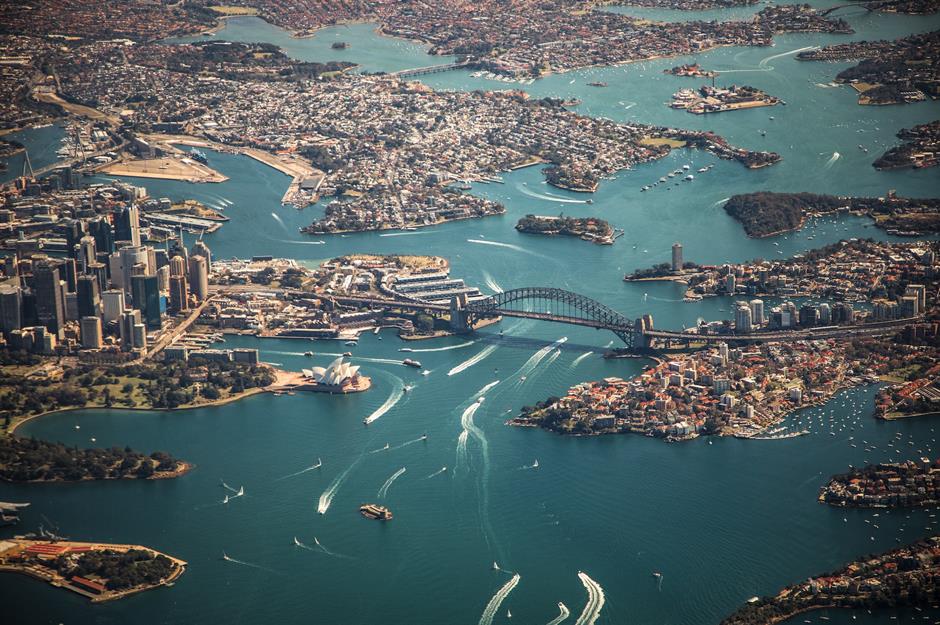
The setting for Australia’s best-known man-made wonders and landmarks, Sydney’s sparkling harbour is also one of the country’s most stunning natural wonders. An inlet of the Tasman Sea, the natural harbour’s wide entrance is framed by a series of headlands known as the Sydney Heads.
Named Port Jackson by Captain Cook in 1770, the waterway includes the North Harbour, Middle Harbour, Sydney Harbour, Lane Cove and the Parramatta Rivers. It is dotted with islands, criss-crossed by ferries and edged with little coves where Sydneysiders go to swim and sail.
34. Wave Rock, Western Australia
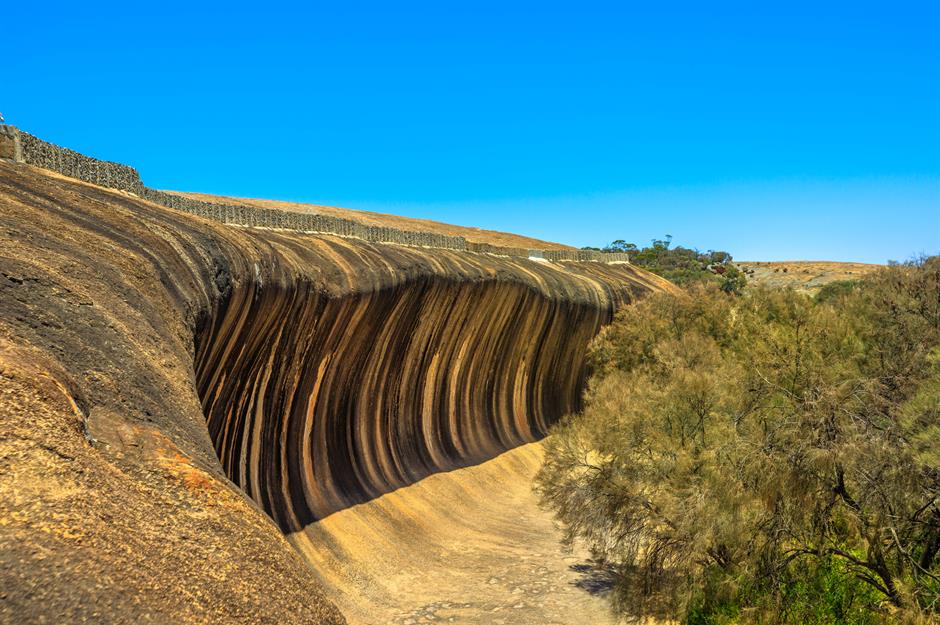
Australia is known for its big waves but you’ll find one of its most spectacular far away from the ocean – a four-hour drive east of Perth. The striking granite cliff known as Wave Rock rises 49 feet (15m) above the outback plain in Western Australia’s Golden Outback region.
The ancient rock formation is particularly spectacular from September to November when wildflowers carpet the area.
33. Simpson Desert
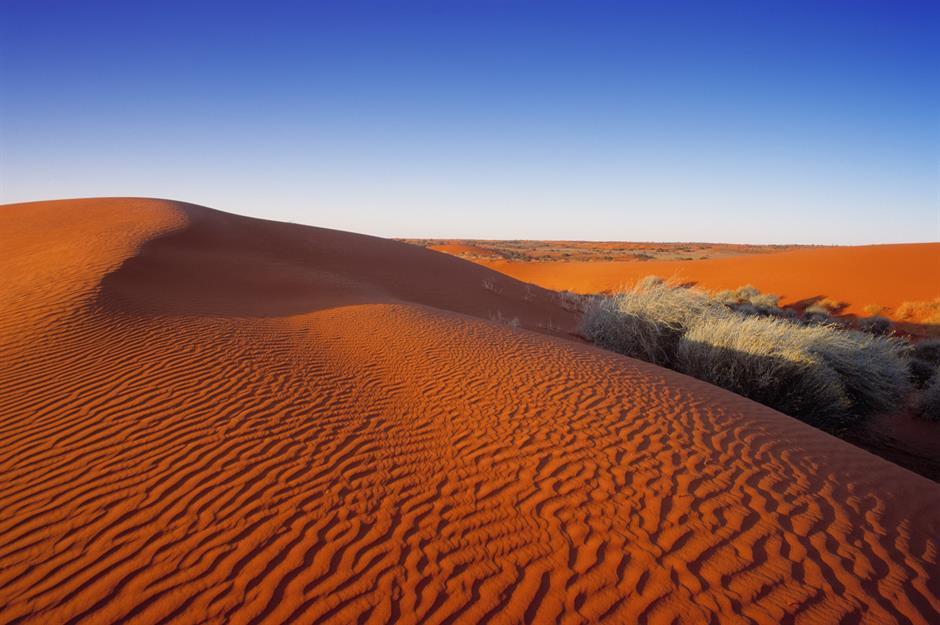
Deep in the heart of Australia, the Simpson Desert is where you’ll find some of its most stark and striking landscapes – rolling red sand dunes, sandstone bluffs and salt pans.
Covering some 55,000 square miles (143,000sq km), it straddles three states (Northern Territory, Queensland and South Australia) and is also one of the country’s most harsh and unforgiving regions. Temperatures can soar past 50°C (122°F) in summer, so the national park here is closed between December and March for safety reasons.
32. Franklin-Gordon Wild Rivers National Park, Tasmania
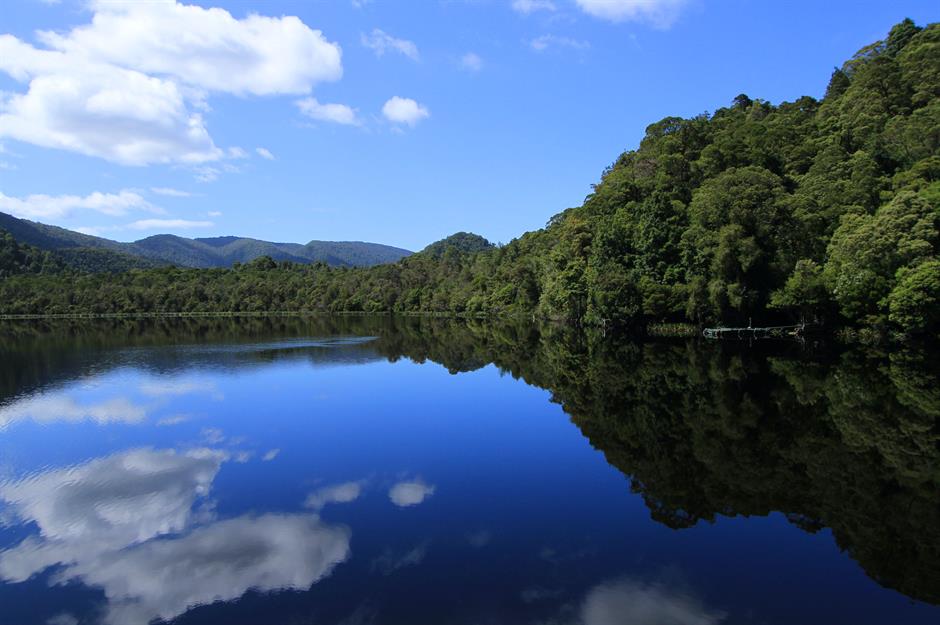
Southwest Tasmania is a wild place: all roaring rivers, deep gorges, plummeting waterfalls, snow-capped peaks and a tangle of temperate rainforest. Follow walking trails or get out on a boat along the Gordon River from the town of Strahan to charter this patch of untamed wilderness.
Keep an eye on the canopy and look for the Tasmanian azure kingfisher and pink robin as you go. The park is also where you can spot Tasmania’s white-bellied sea eagle and the wedge-tailed eagle.
31. Wollemi National Park, New South Wales
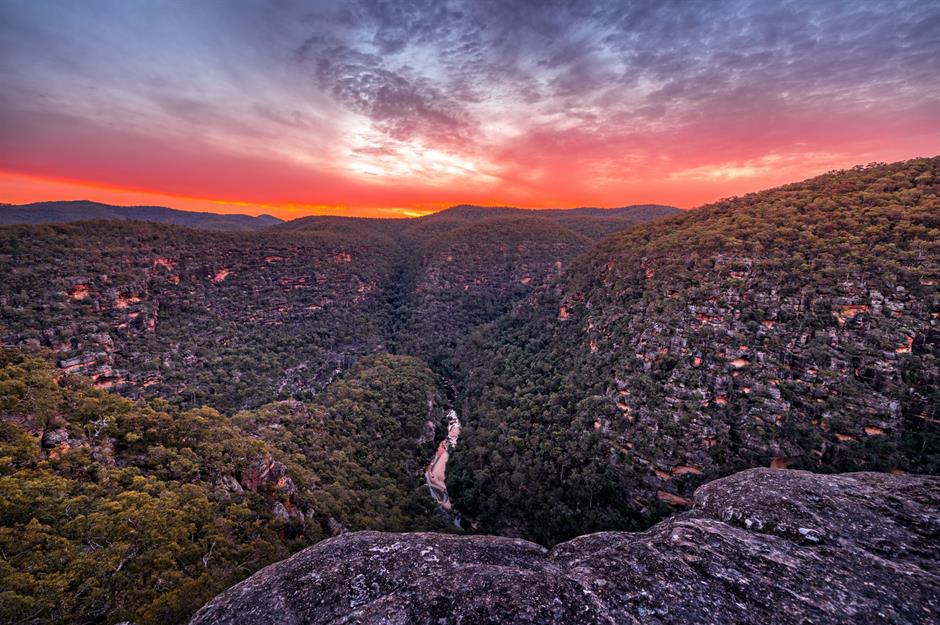
Enter an ancient wilderness that’s just hours from Sydney but could be from another millennium. An endless landscape of scenic canyons, towering cliffs, wild rivers and serene forests, it was in Wollemi National Park in the northern Blue Mountains that one of the world's oldest and rarest tree species was found.
Presumed extinct until discovered in a remote canyon in 1994 by a bushwalker, the Wollemi Pine belongs to a 200-million-year-old plant family.
30. Three Sisters, New South Wales
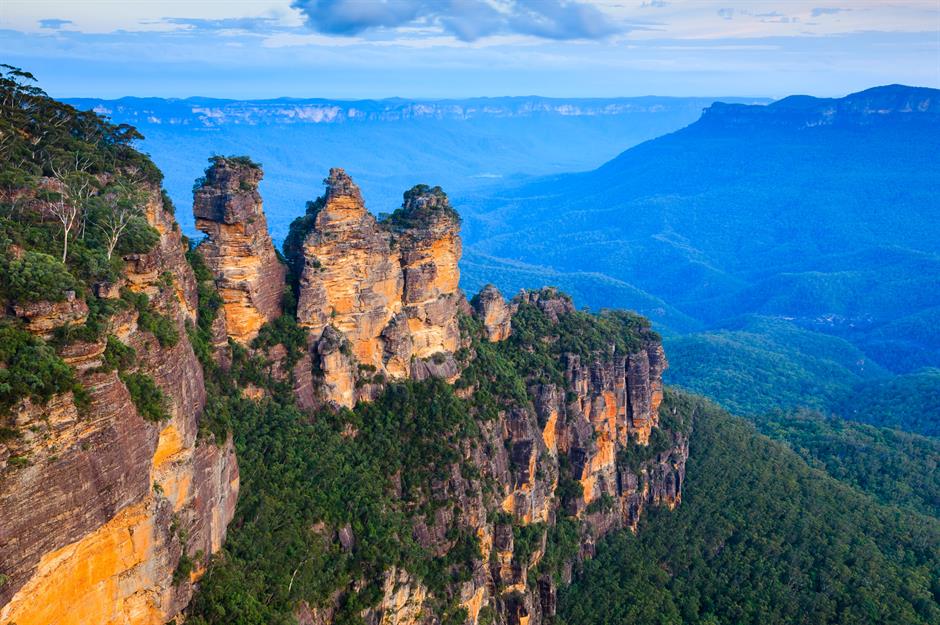
Tangles of native bushland, waterfalls, forested valleys, cliffs and caves – the scenery in the Greater Blue Mountains World Heritage Area is nothing short of spectacular.
The area’s most famous landmark is the Three Sisters. According to Aboriginal legend, the towering rocks represent three sisters who were turned to stone. The sisters are best admired from Echo Point Lookout – or get a closer look by following a walking trail to the top via Honeymoon Bridge.
29. Ikara-Flinders Ranges National Park, South Australia
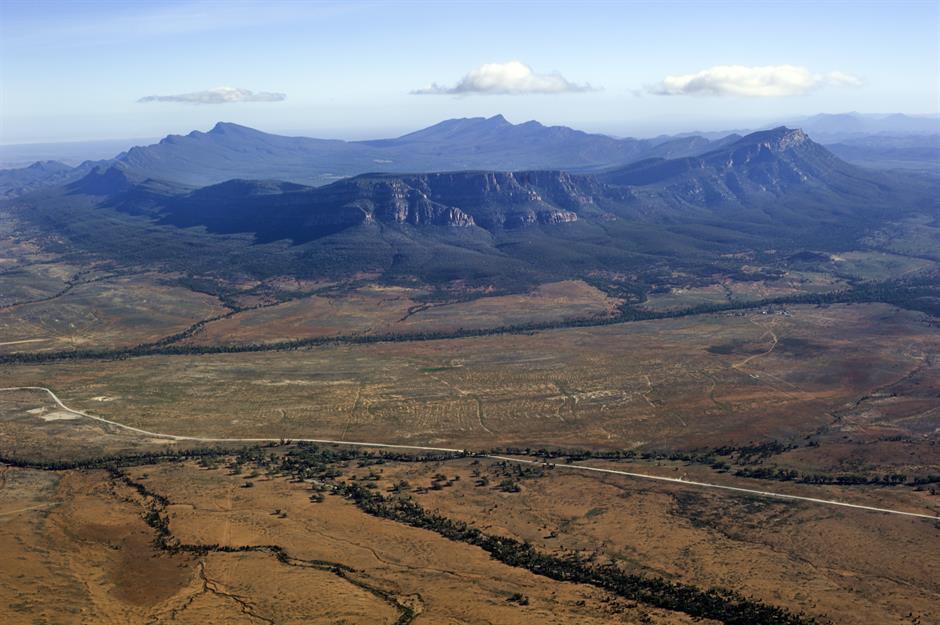
An age-old meeting place for the Adnyamathanha people, this gaping amphitheatre of mountains known as Wilpena Pound is one of endless jaw-dropping sights in the surreal landscape of this epic national park.
Home to the Flinders Ranges, South Australia’s largest mountain range, other notable landmarks are the Heysen Range and the Brachina and Bunyeroo gorges. Beyond its dramatic geological features, the park has plenty of flora and fauna – follow trails along its pretty gum-lined creeks to spy wildlife.
28. Purnululu National Park, Western Australia

The vast and varied Kimberley region in Western Australia is one of the last great wildernesses on Earth. Among the rugged region's many wonders are the beehive-like rock formations known as the Bungle Bungle Range in Purnululu National Park.
The maze of orange and black-striped karst sandstone domes are best seen from above on a helicopter tour or scenic flight.
27. Hanging Rock, Victoria
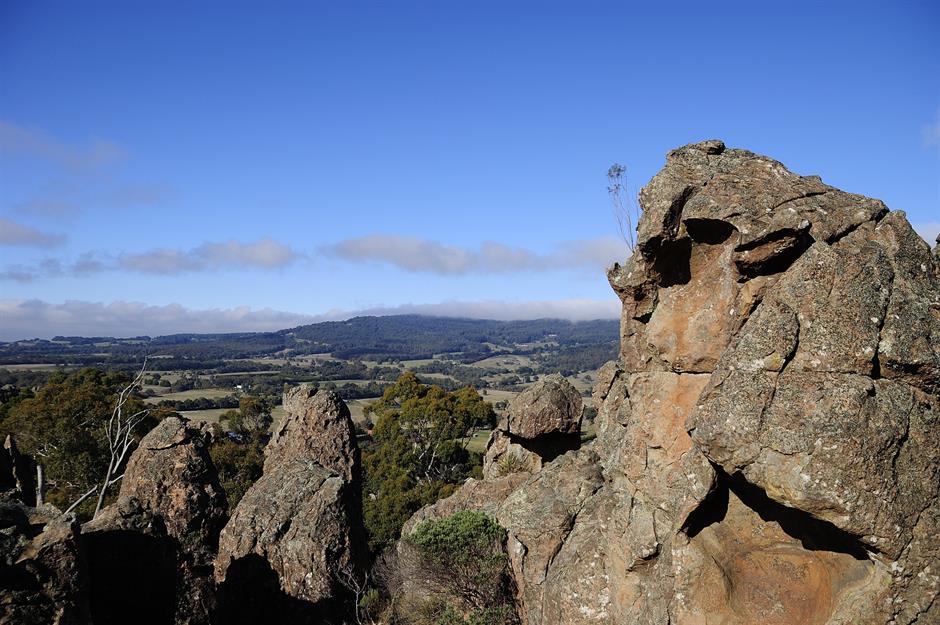
Shrouded in mystery, thanks to Joan Lindsay’s novel Picnic at Hanging Rock, this jagged outcrop in the Macedon Ranges is another of Australia’s intriguing geographical formations.
Peppered with caves, tunnels and overhanging boulders, the distinctive rock formation was used for sacred ceremonies and initiations by the Dja Dja Wurrung, Woi Wurrung and Taungurung people, who are said to have avoided its summit, believing it to be inhabited by evil spirits. But if you’re not easily spooked, the views from the top are spectacular.
26. Litchfield National Park, Northern Territory
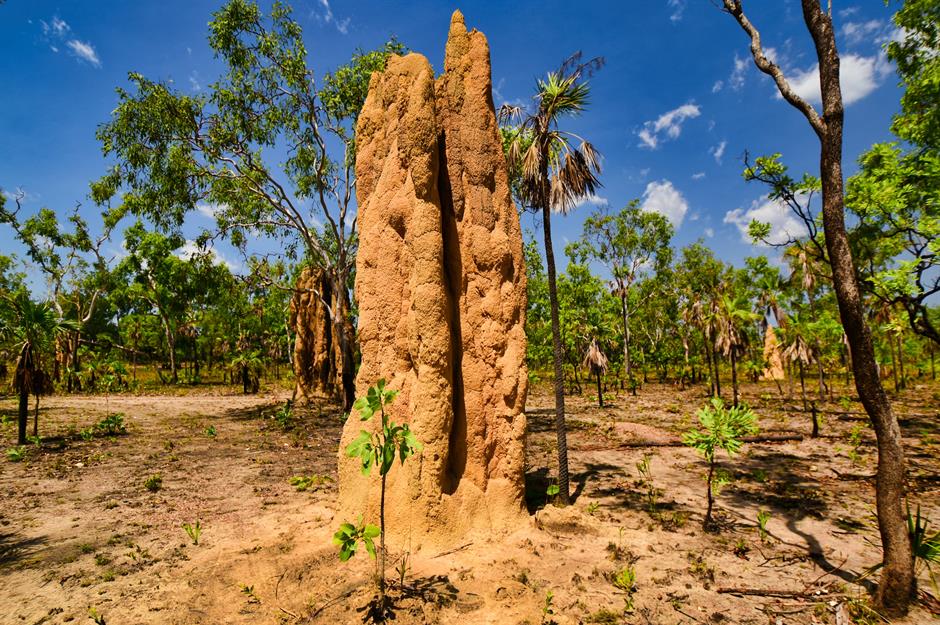
Towering termite mounds, thundering waterfalls and tempting plunge pools characterise Litchfield National Park, which lies a few hours south of Darwin. Walk around the field of giant termite mounds and visit the weathered sandstone pillars of the Lost City then cool off in Florence Falls, Tolmer Falls and Wangi Falls.
Be sure to follow the Florence Creek Walk through monsoon forest to Buley Rockhole, a collection of natural spas and whirlpools – and an enticing spot to wallow in on a steamy day.
25. Southern Forests, Western Australia
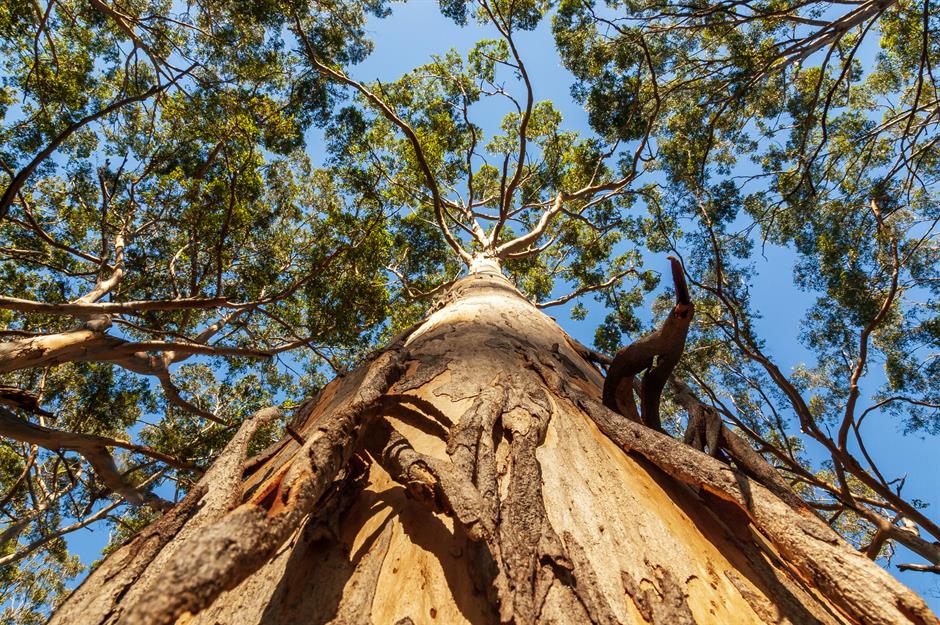
As well as magnificent surf beaches, the southern part of Western Australia is home to unique forest habitats where some of the world’s tallest tree species flourish.
Feel dwarfed by the imposing karri trees in the Boranup Karri Forest, or walk high in the canopy of an ancient tingle forest. You can see the giant eucalyptus trees, which are found nowhere else in the world, at the Tree Top Walk within the Walpole-Nornalup National Park and Walpole Wilderness Area.
24. Namadgi National Park, Australian Capital Territory
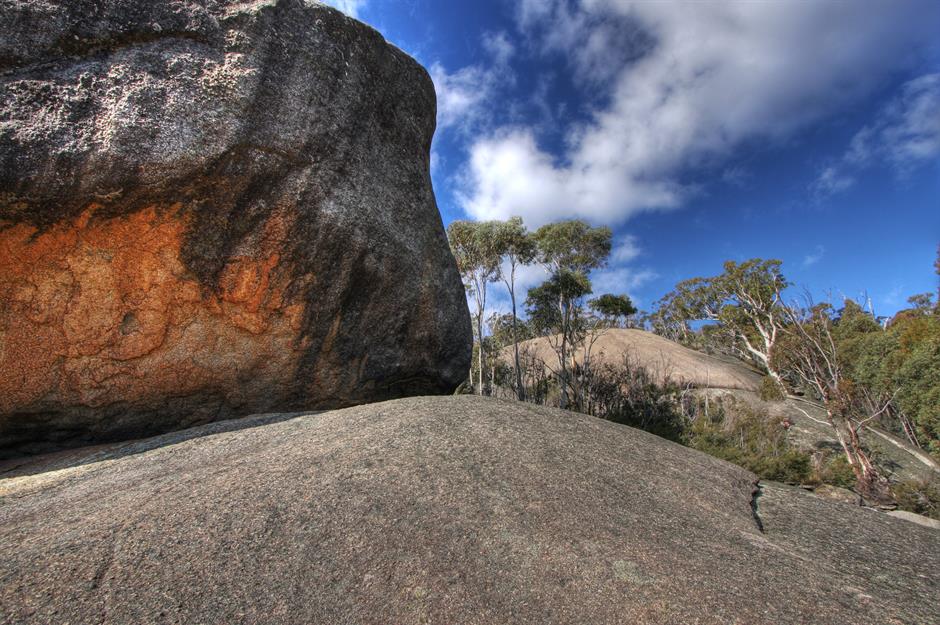
Just to the southwest of Canberra and at the northern end of the Australian Alps, this large but under-the-radar national park has plenty of wow factor.
A wonderful network of walking trails will take you around Namadgi National Park's snow gum forests and alpine meadows, and weaving up its granite peaks and striking outcrops. Its highest mountain is Bimberi Peak.
23. Atherton Tablelands, Queensland
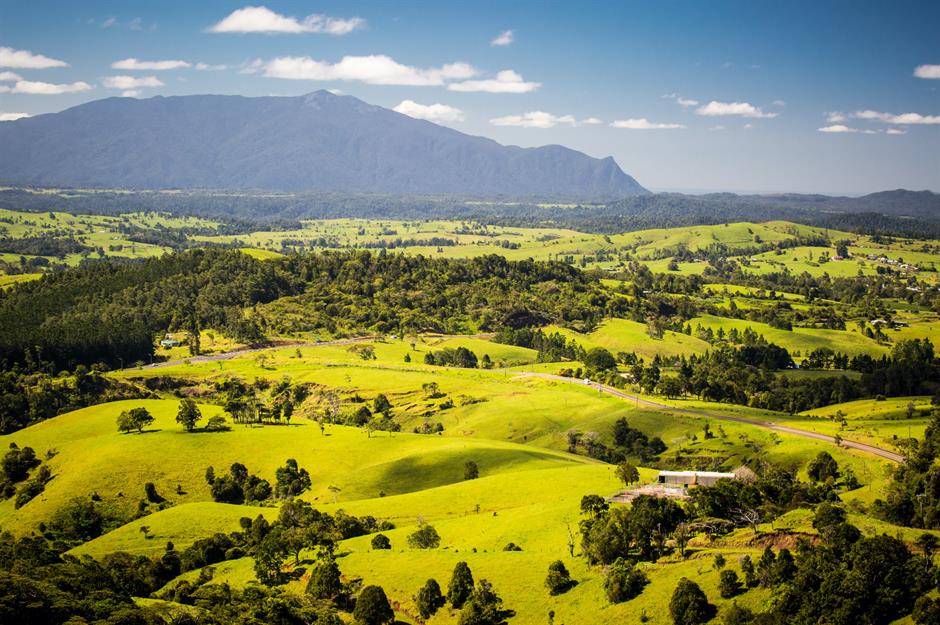
Rising up from the plains southwest of Cairns, the great fertile plateau of the Atherton Tablelands is part of the Great Dividing Range in Queensland.
The undulating and scenic region is home to towering ranges, beautiful waterfalls, lakes and rainforest, as well as lush coffee and tropical fruit plantations and wineries. It's also got some charming country towns.
22. Australian Alps
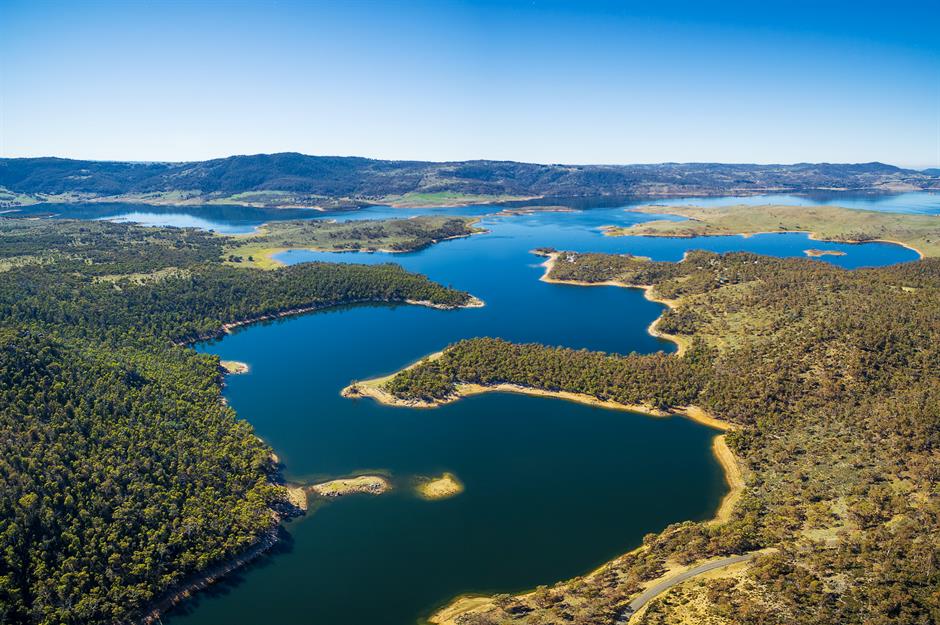
Straddling eastern Victoria, southeastern New South Wales and the Australian Capital Territory, the Australian Alps have the country’s highest and most dramatic peaks. In New South Wales you’ll find the Snowy Mountains, located within the Kosciuszko National Park.
It's a stunning high alpine landscape of rivers, mountains, ski fields, caves and lakes, including Lake Jindabyne (pictured). Hike to the summit of Mount Kosciuszko, the country’s highest peak at 7,310 feet (2,228m), for top views.
21. Lord Howe island, New South Wales
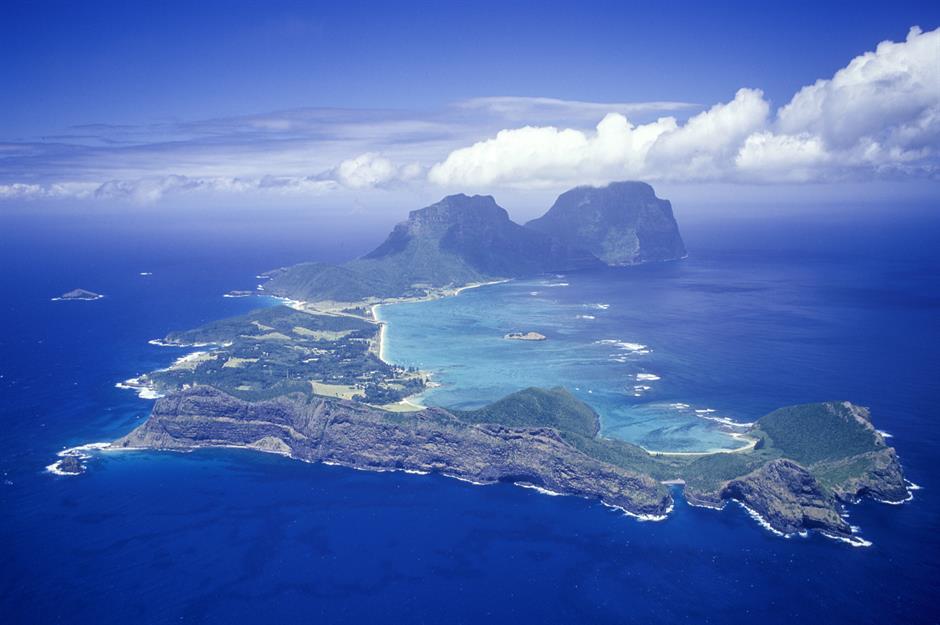
Lord Howe Island is a veritable treasure island. Set off the coast of New South Wales in the Tasman Sea, the UNESCO World Heritage Site island is home to the world’s most southerly coral reef.
Characterised by lush mountainous terrain, the crescent-shaped isle is also a birdwatcher’s paradise, with more than 130 permanent and migratory bird species and a huge diversity of insects and endemic plants.
20. Kati Thanda-Lake Eyre, South Australia
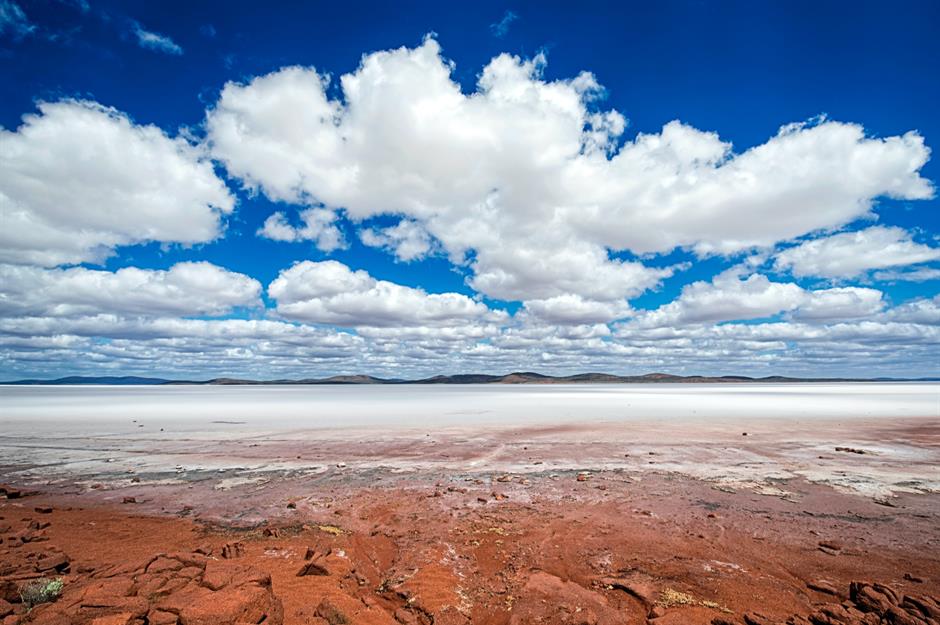
The vast expanse of shimmering salt known as Kati Thanda-Lake Eyre is Australia’s largest salt lake and the country's lowest point. It covers an area of 4,281 square miles (11,088sq km) in central southern Australia.
When it floods – a spectacular seasonal miracle that happens every few years – it teems with waterbirds and turns various shades of pink and orange. When the lake completely fills, a few times every century, it becomes the largest lake in Australia.
19. Ningaloo Reef, Western Australia
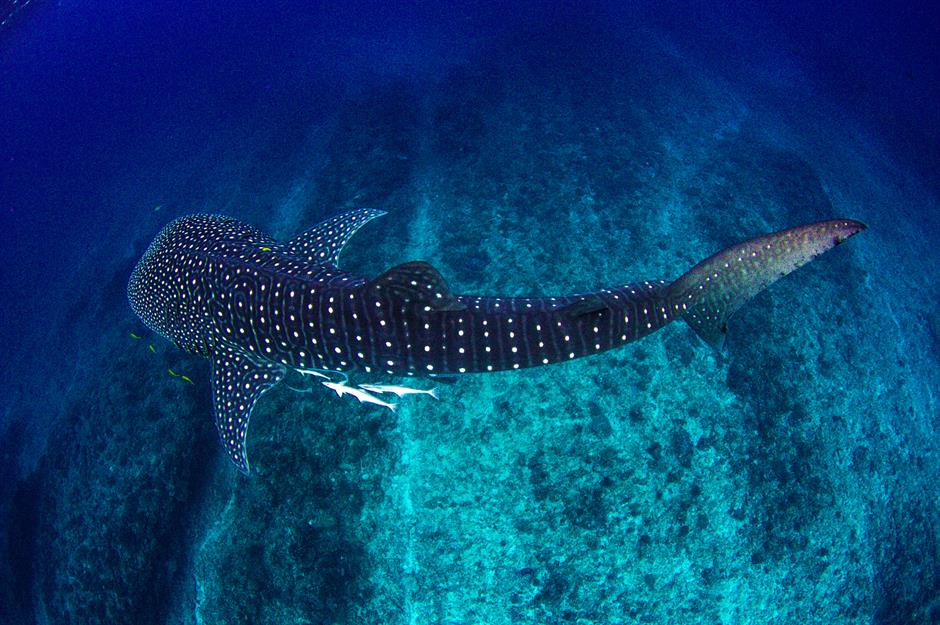
The UNESCO-listed Ningaloo Reef is one of the longest fringing coral reefs in the world at 162 miles (260km) long. It's home to more than 250 species of coral and more than 500 species of fish, including manta rays and giant whale sharks.
What's wonderful about this remarkable reef is its proximity to shore – it’s possible to snorkel over it straight off beaches such as the stunning Turquoise Bay near Exmouth.
18. Kata Tjuta, Northern Territory
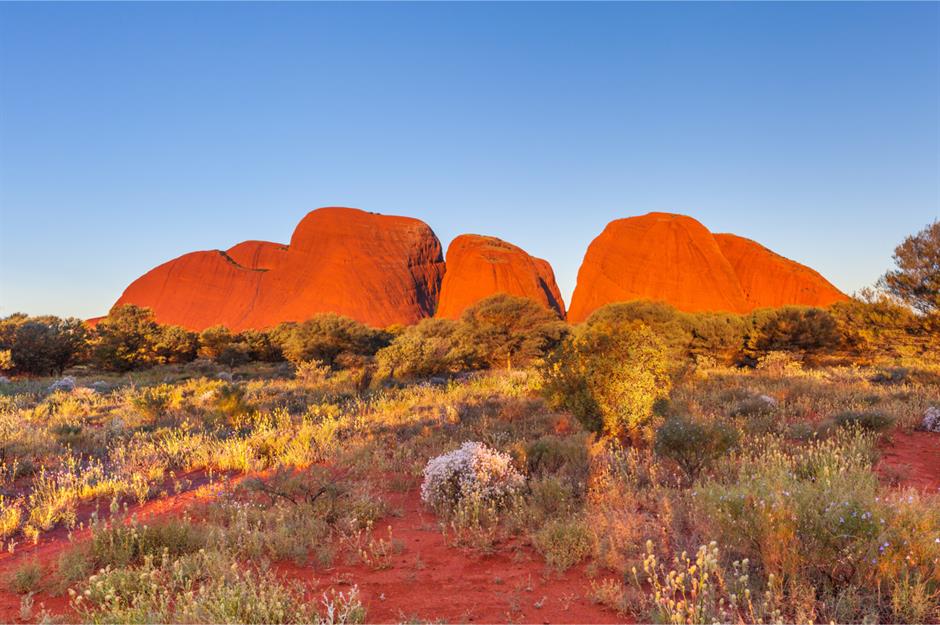
Many people find the soaring ochre-coloured domes of Kata Tjuta more arresting than Uluru, which lies just to the south. Meaning 'many heads' in the language of the traditional owners, the Anangu people, these 36 giant monoliths are also known as the Olgas and can be found within the spectacular Uluru-Kata Tjuta National Park.
Take the three-hour Valley of Winds Walk around the ancient rocks and gorges, which are sacred to the Anangu people, to get a sense of their majesty.
17. Kangaroo Island, South Australia
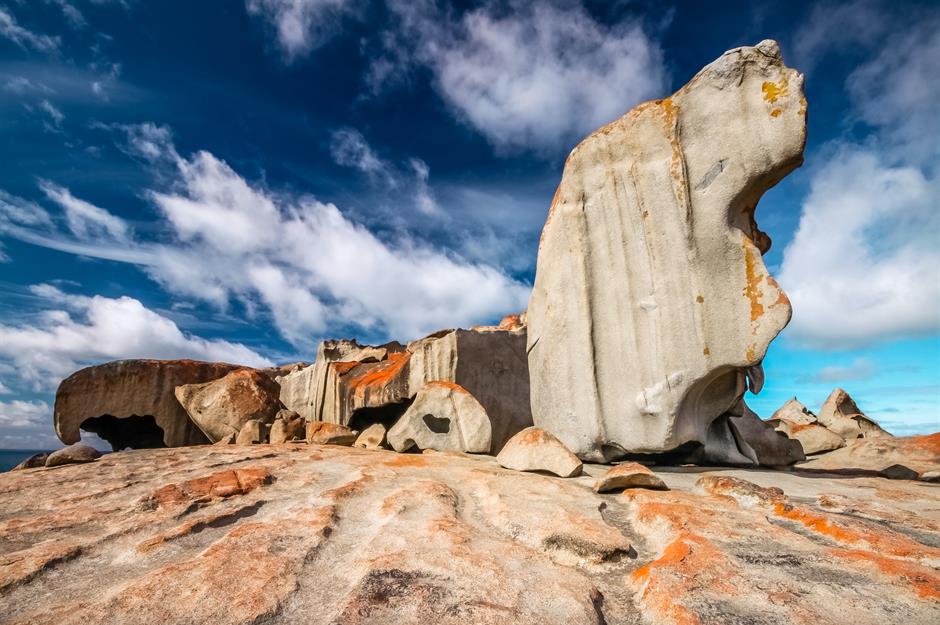
Set off the coast of South Australia, rugged Kangaroo Island is one of the best places to see Australia’s unique animals including kangaroos, koalas and sea lions.
The island is also home to diverse habitats, including woodlands and wetlands, while its craggy coast is characterised by rocky bays, strange rock formations (including Remarkable Rocks, pictured) and lofty cliffs.
16. Karijini National Park, Western Australia
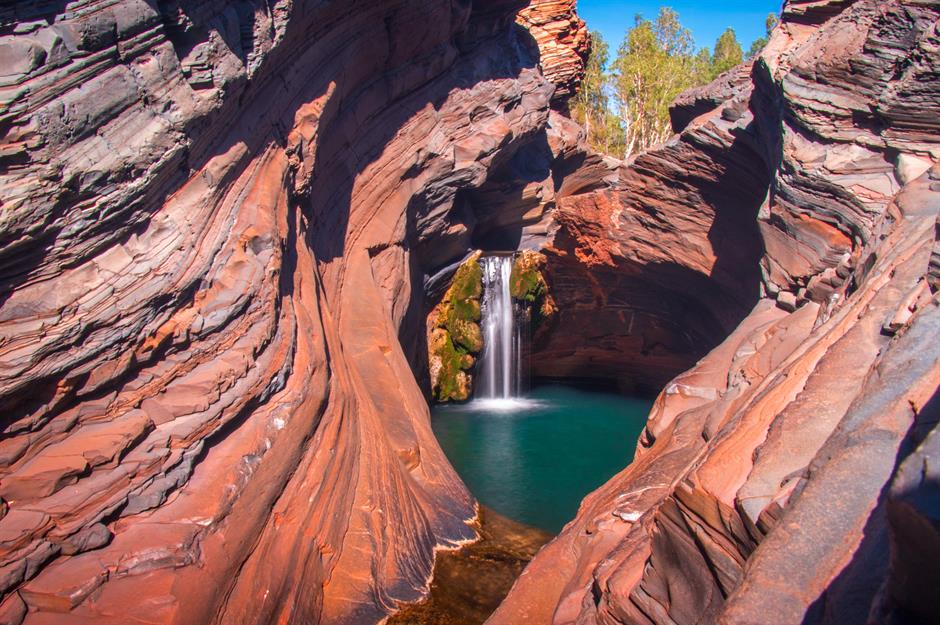
Swim in spring-fed emerald pools beneath crashing waterfalls deep in the scorched depths of Western Australia’s Pilbara region. Home to some of the state's most striking scenery, Karijini National Park is known for its cavernous gorges and enticing creeks.
It's home to a wide variety of birds and reptiles too, as well as red kangaroos, rock-wallabies, echidnas and several bat species. Huge termite mounds also dot the landscape.
15. The Pinnacles, Western Australia
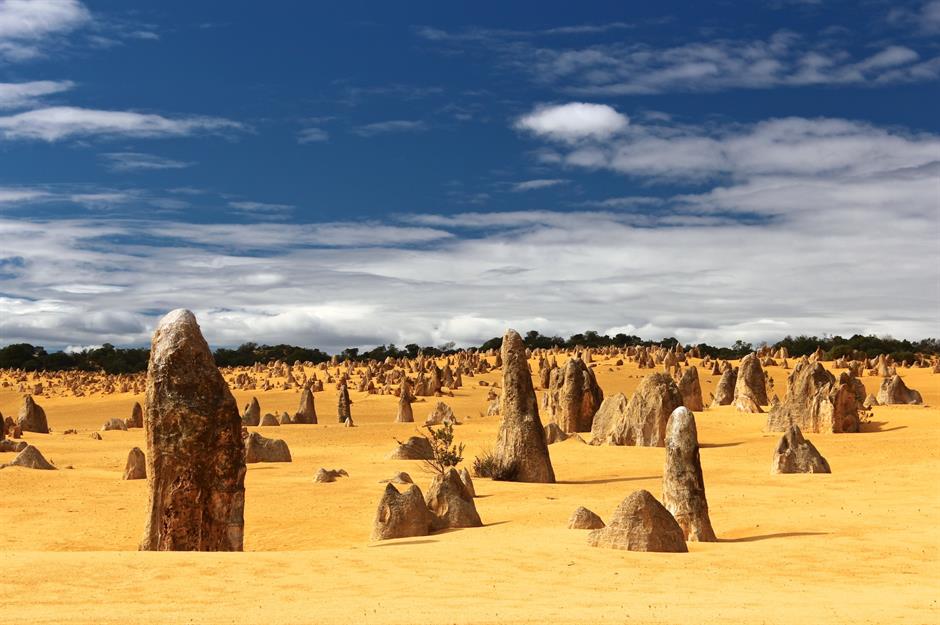
These surreal lunar-like limestone formations, known as the Pinnacles in Nambung National Park, are even more mesmerising in the flesh. Reaching up to 16 feet (5m) high, thousands of individual formations are dotted among the desert sands as far as the eye can see.
While they are entirely natural, they look as if they were sculpted by hand. It’s not surprising that when they were first discovered by Europeans it was thought they belonged to a lost city.
14. Horizontal Falls, Western Australia

These twin tidal waterfalls, where water passes horizontally rather than vertically, are located deep within Talbot Bay in the Buccaneer Archipelago on the Kimberley Coast.
Extremely powerful tidal currents send water hurtling through two narrow coastal gorges which sit opposite each other to create a waterfall effect. The twin gaps are part of the McLarty Ranges and the best way to see this natural phenomenon is by air from a seaplane flight from nearby Derby.
13. MacKenzie Falls, Victoria
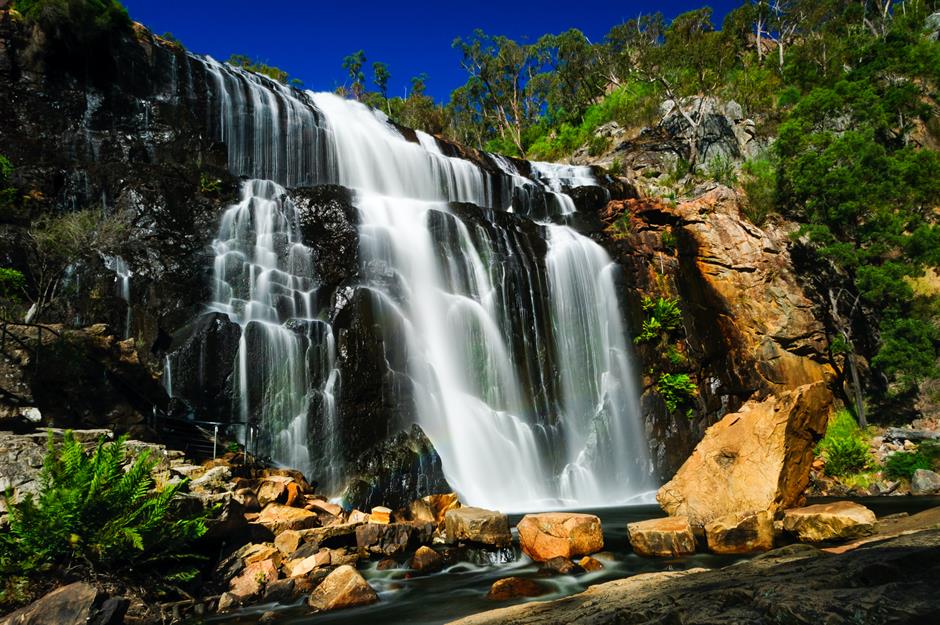
Crashing down into a deep gorge in the heart of the craggy Grampians National Park, MacKenzie Falls is one of Victoria’s largest and most impressive waterfalls.
See it from above by following the path to the viewing platform at the Bluff, or challenge yourself on the steep trail to the base of the falls for a different perspective on the thundering cascade. The national park is full of spectacular waterfalls – be sure to visit Fish Falls and Beehive Falls too.
12. Nitmiluk Gorge, Northern Territory
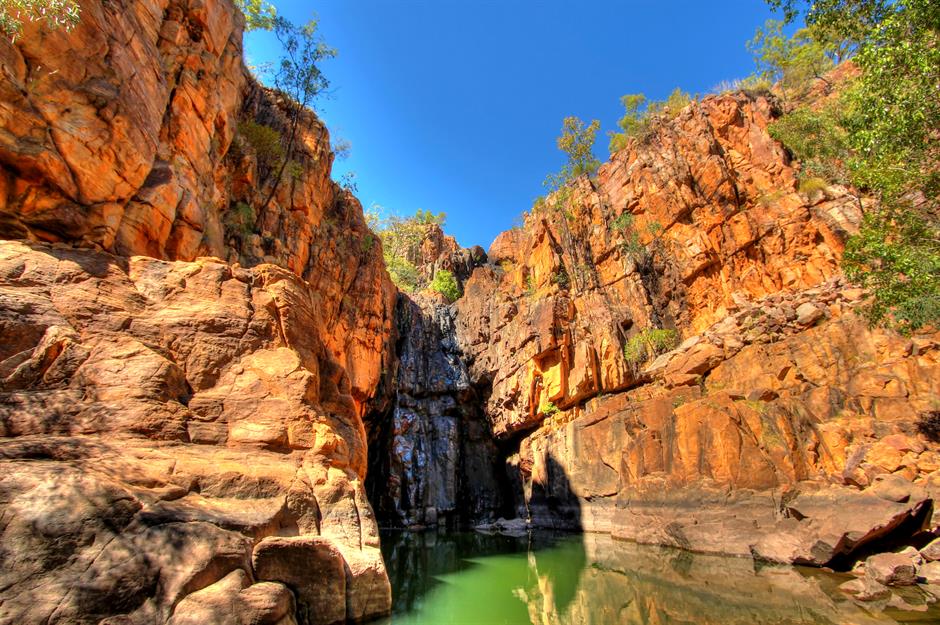
Another of the Northern Territory’s colossal natural formations, the mighty Nitmiluk Gorge (sometimes known as Katherine Gorge) is a sight to behold. The vast chasm has been carved out of the sandstone cliffs by the Katherine River over thousands of years. In fact, it’s made up of 13 separate gorges and steeped in places sacred to the Jawoyn people.
The best way to appreciate its size is by canoeing along the river to gaze up at the sheer cliffs and pass by its waterfalls and ancient rock art sites.
11. Aurora Australis, Tasmania
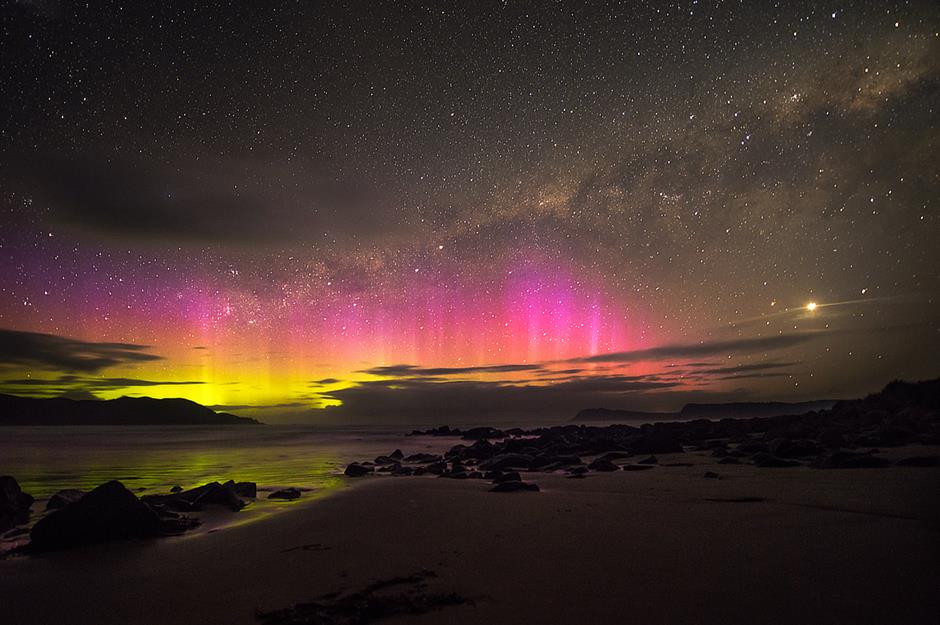
You've heard of the Northern Lights, but did you know about the Southern Lights? Aside from Antarctica, Tasmania is the best place to see the magical swirls of reds, pinks, oranges, purples and greens known as the aurora australis.
It is possible to see this phenomenon all year round but as dark skies are key, your best bet is in winter (June to August). Bruny Island (pictured) is a beautiful place to hold a stake out.
10. Great Australian Bight Marine Park, South Australia
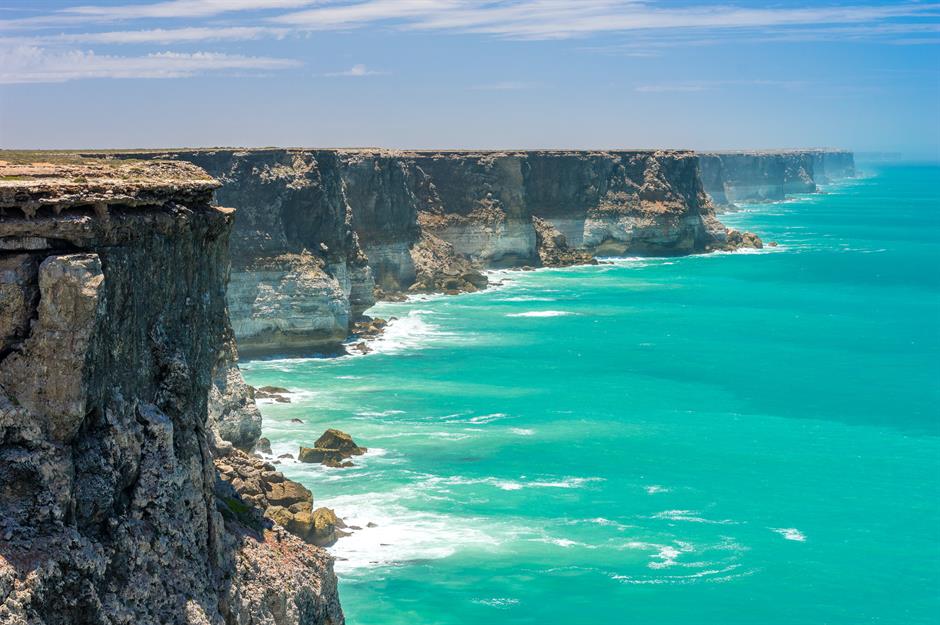
Breathtaking doesn’t begin to cover the view as you stand buffeted by wind on top of the vertical cliffs of this large oceanic bight in South Australia. On the southern edge of the Nullarbor Plain, the Bunda Cliffs, which reach heights of between 200 and 400 feet (60 and 100m), are among the park's most spectacular sights.
It's also a top spot for watching southern right whales as they migrate between May and October – this is an important calving area for the endangered mammals. Around 80% of Australia’s native sea lion population are also found here.
9. Shark Bay World Heritage Area, Western Australia
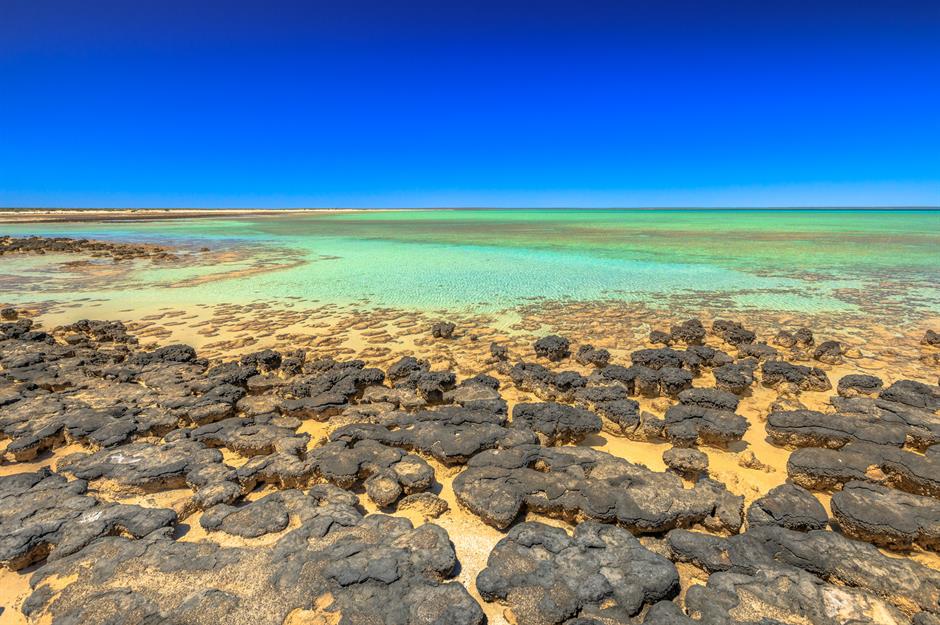
Dugongs are just one of the extraordinary sights at this UNESCO-listed reserve on Western Australia’s Coral Coast. The marine mammals love the warm shallow waters and grazing on the several species of seagrass that can be found in Shark Bay.
The area supports a wide diversity of sea life including more than 10,000 dugongs. It’s also where you’ll find Shell Beach, formed by tiny little shells, and the Hamelin Pool stromatolites (pictured), the oldest and largest living fossils on Earth.
8. Jervis Bay Marine Park, New South Wales
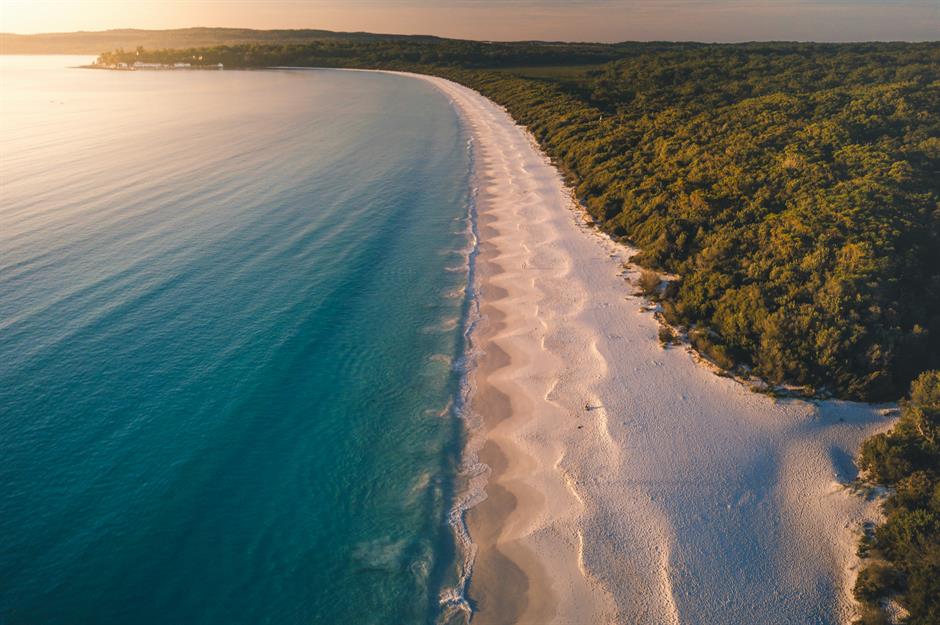
White sands, whale watching and spectacular bushwalking tracks lure Sydneysiders to weekend along the string of beautiful beaches in southern New South Wales known as Jervis Bay.
Hyams Beach (pictured) is famed for having the whitest of sands while Green Patch at the southern end is a stunner, bordering the wilderness of Booderee National Park, a place rich in Aboriginal heritage. Visit from May to November to see the annual whale migration.
7. Staircase to the Moon, Western Australia
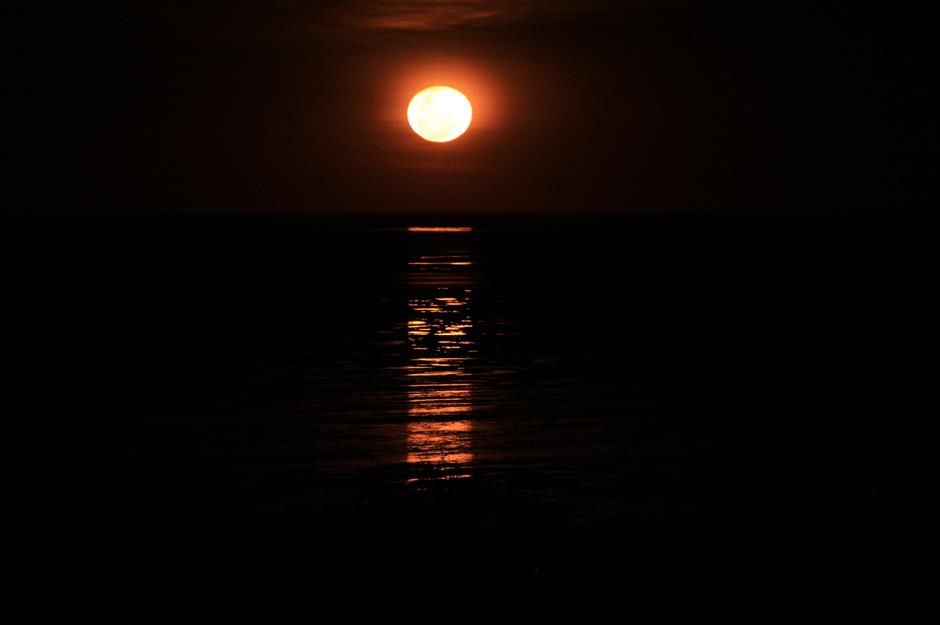
Visit Roebuck Bay in Broome between March and November and you'll see one of the country's strangest sights.
Known as the Staircase to the Moon, this natural phenomenon is caused when the rising full moon reflects off the exposed mudflats of the bay, and elsewhere on the coast of the Kimberley region, at extremely low tide. The reflection creates a magical optical illusion of a stairway reaching up to the moon.
6. Kings Canyon, Northern Territory
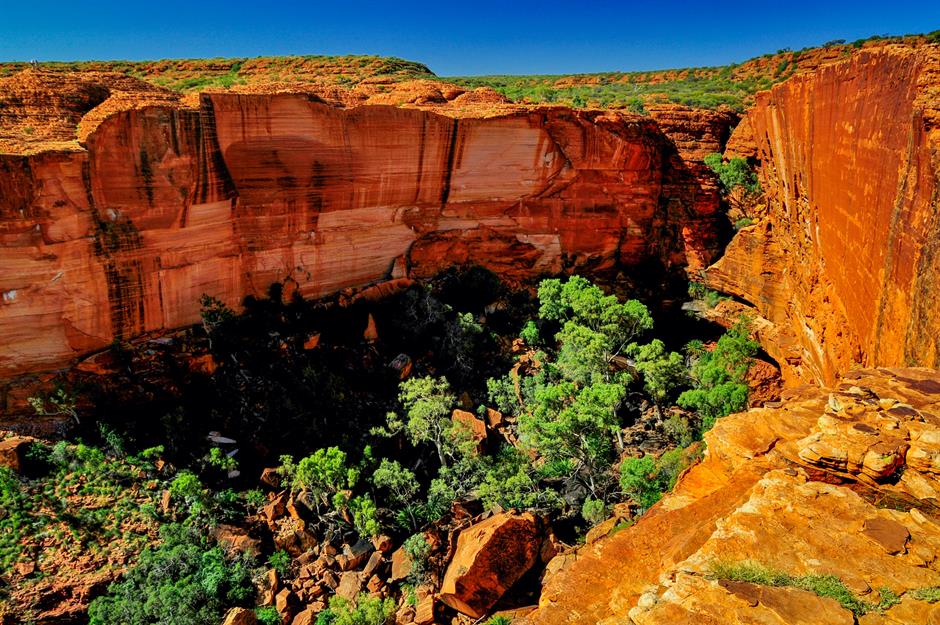
Walk around an oasis of ancient cycads and a waterhole deep in the heart of Kings Canyon, a vast chasm where sheer sandstone cliffs form a horseshoe around the green floor, which is known as the Garden of Eden.
Located in Watarrka National Park, 141 miles (227km) southwest of Alice Springs, the best times to explore this beauty are at sunrise and sunset when the rugged canyon blazes. Take the Kings Canyon Rim Walk to see the oasis, the weathered domes of the Lost City and ascend the cliffs for incredible views over the scorched landscape.
5. Daintree National Park, Queensland
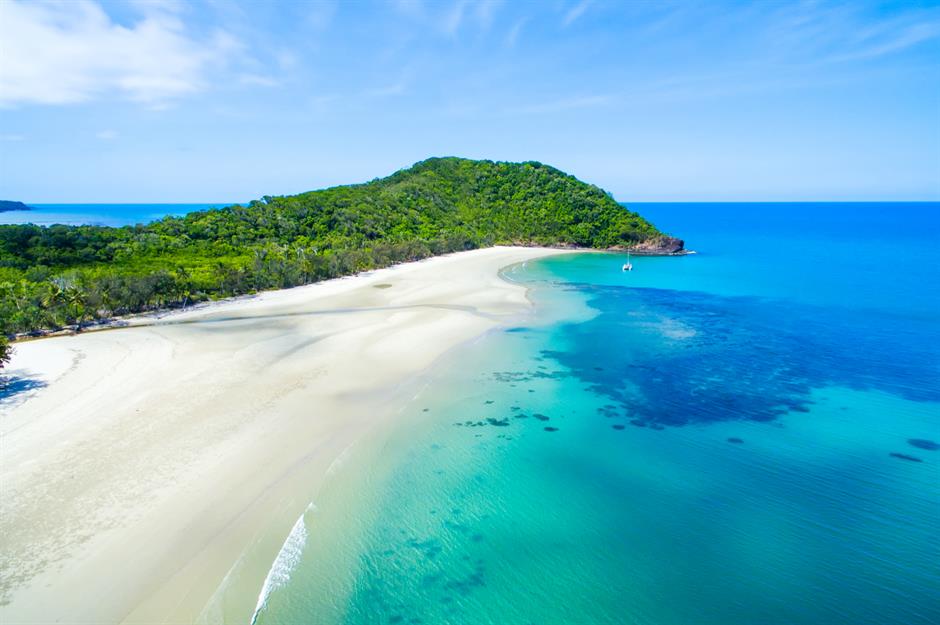
The landscape on the northeast coast of Queensland is among the most remarkable on the planet: a place where ancient rainforest meets the Coral Sea. The oldest tropical rainforest in the world and the largest in the country, Daintree dates back to when Australia was part of supercontinent Gondwanaland.
It's more than 110 million years old and contains plants and animals found nowhere else. Take a boat trip down Daintree River to spot crocs and look out for the cassowary, a giant flightless bird.
4. Fraser Island, Queensland
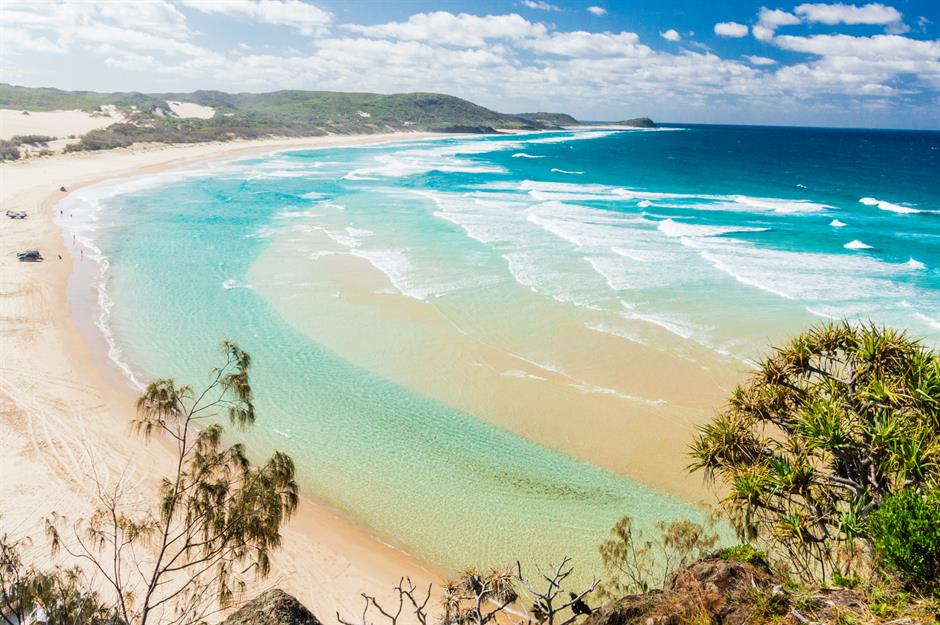
At 76 miles (123km) long and 14 miles (22km) wide, Fraser Island is the world’s largest sand island. Set off the coast of Hervey Bay, it has more than 40 freshwater lakes and is the only place in the world where rainforest grows on sand.
The remarkable island is also home to many native species including, most famously, the purest species of dingo. However, it’s not advisable to take a swim off its stunning 75 Mile Beach, as waters here are notorious for sharks and deadly jellyfish.
3. Lake Hillier, Western Australia
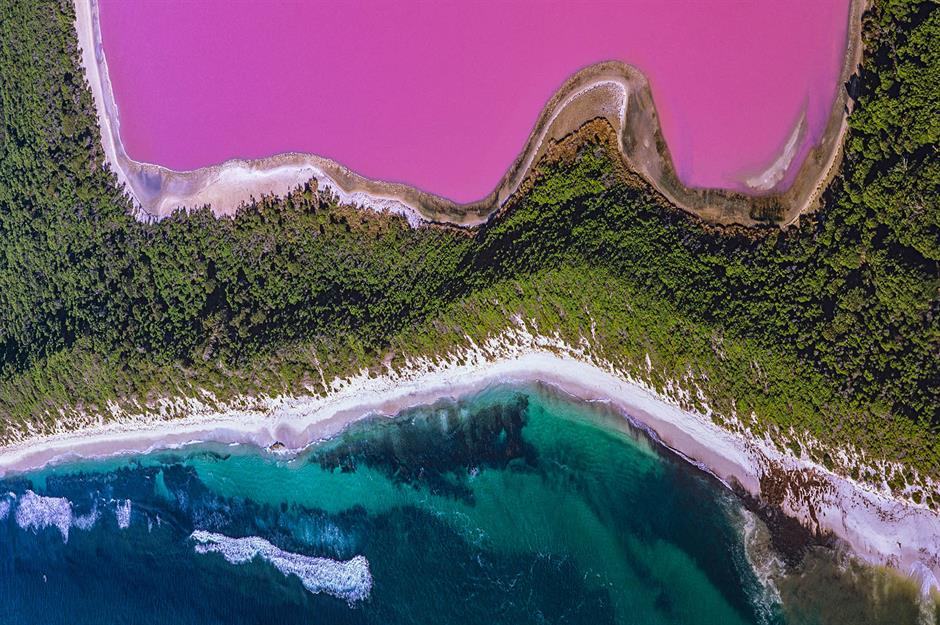
Australia’s natural wonders come in a kaleidoscope of colours, including bright pink. The pretty-hued Lake Hillier can be found on Middle Island in Western Australia’s Recherche Archipelago, around 70 miles (130km) from Esperance.
Framed by green forest and blue water, it’s an extraordinary sight. Head up on a scenic flight to get the best views. It’s not certain exactly why the water is pink but it’s thought to be related to high salt levels.
2. Uluru, Northern Territory
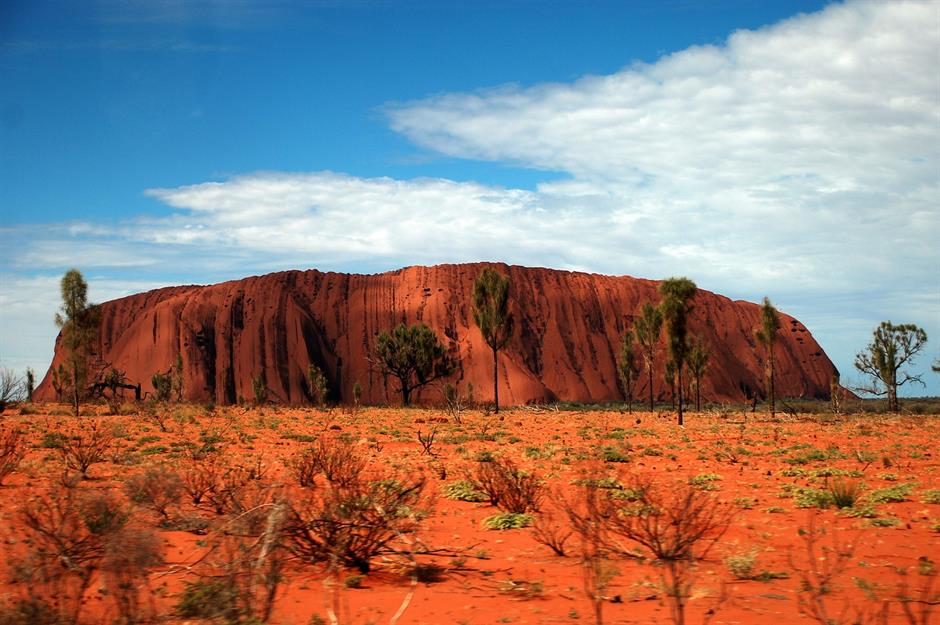
The imposing beauty and spiritual significance of this mammoth monolith, which thrusts out of the red dirt in the desolate centre of Australia, is unnerving.
Surrounded by the Red Centre's untamed wilderness as far as the eye can see, there's something truly primeval about the ancient sandstone boulder. It's a hugely sacred site for the Anangu people – the custodians of the land – and one of the greatest natural wonders of the world.
1. Great Barrier Reef, Queensland
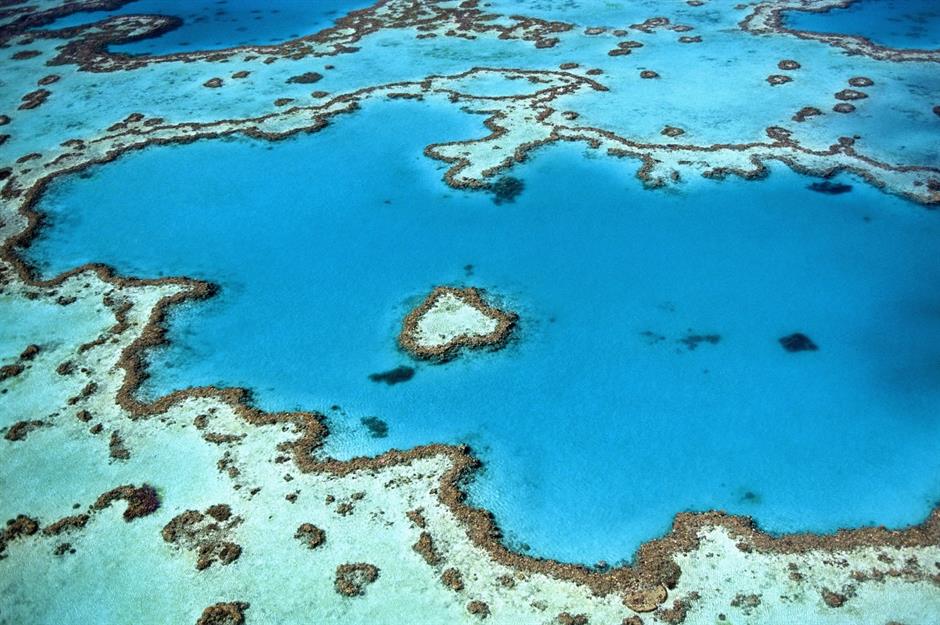
Located off the coast of Queensland in northeast Australia, the Great Barrier Reef is the largest living structure on the planet and contains myriad natural wonders of its own. No surprise then, that it earns the top spot in this ranking.
It is composed of more than 2,900 individual reefs and covers an incredible 135,000 square miles (350,000sq km). Its waters contain around 10% of the world's total fish species and it has 30 species of whales, dolphins and porpoises.
Comments
Be the first to comment
Do you want to comment on this article? You need to be signed in for this feature